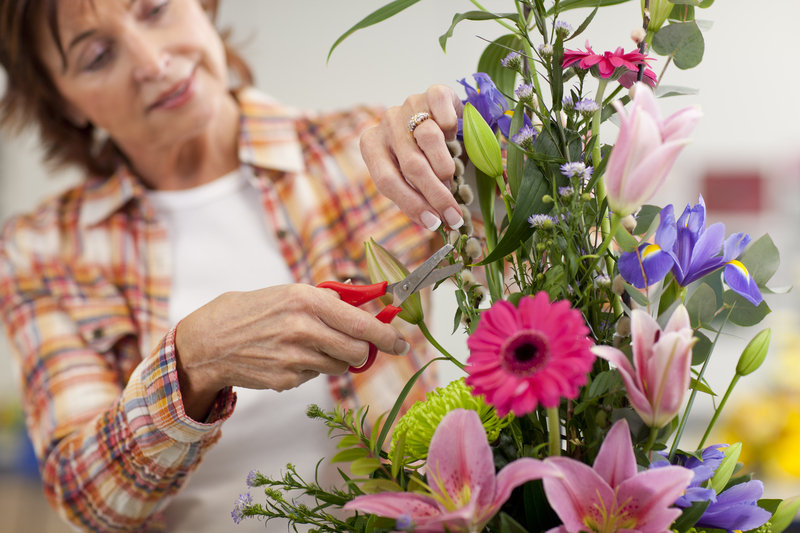Essential Care Tips for Long-Lasting Poinsettias
Posted on 14/08/2025
Essential Care Tips for Long-Lasting Poinsettias
Poinsettias (Euphorbia pulcherrima) are undoubtedly the star of the holiday plant world. Their vibrant red, pink, or white bracts and dark green foliage make them a classic festive decoration. However, many people find that their beautiful poinsettia doesn't last much longer than the holiday season. With the right poinsettia care tips, you can actually enjoy your plant's color and vitality for months, or even rebloom it next year! Here's a detailed, comprehensive guide to caring for poinsettias and ensuring your plant stays healthy and beautiful long after the festivities fade.


Understanding Your Poinsettia
Before delving into long-lasting poinsettia care, it's important to understand what makes these plants unique.
- Bracts are not flowers: The colored parts of the poinsettia, often mistaken for petals, are actually modified leaves called bracts. The true flowers are the small, yellow clusters in the center, called cyathia.
- Native climate: Poinsettias hail from subtropical regions of Mexico. They prefer warm temperatures, indirect sunlight, and moderate humidity.
- Photoperiodism: Poinsettias bloom in response to shorter days and longer nights, which is why their colorful display coincides with winter in the Northern Hemisphere.
When you know what your plant needs, you can provide the optimal environment for poinsettia longevity.
Choosing a Healthy Poinsettia
The foundation of poinsettia plant care is to start with the healthiest plant you can find. This makes a huge difference in how well your poinsettia will perform and how long the display will last.
- Full color: Select a plant with vibrant, fully colored bracts with no green edges. Faded or green-tinted bracts indicate an aging plant.
- Intact cyathia: The central flower clusters (cyathia) should be present and unopened for longer displays. If they're gone, the plant is nearing the end of its cycle.
- Healthy leaves: The foliage should be deep green and lush. Avoid plants with yellowed, wilted, or dropping leaves.
- No pests or diseases: Inspect the undersides of leaves for signs of insects or powdery residue.
Positioning Your Poinsettia
The right placement is vital for ensuring long-lasting poinsettias.
Light Requirements
- Bright, indirect light: Poinsettias thrive in bright locations but should be shielded from direct, hot sunlight, which can scorch the bracts and leaves. Place them near a sunny window but not in the path of direct midday sun.
- Rotate regularly: Turn your plant every few days so all sides receive sunlight, ensuring even growth.
Temperature and Humidity
- Ideal temperature: Keep poinsettias in a consistent temperature of 60-70?F (15-21?C) during the day and not below 55?F (13?C) at night.
- Draft-free location: Avoid placing near cold drafts, heating vents, or appliances, which can stress the plant.
- Maintain humidity: If your home is very dry, especially in winter, mist your plant lightly or use a pebble tray with water to increase humidity.
Watering Poinsettias for Maximum Longevity
Watering is often where people go wrong with poinsettia care. Overwatering or underwatering are both harmful, but with a few key tips, you can get it just right.
- Check moisture level: Before watering, stick your finger into the soil up to the first knuckle. If the soil feels dry to the touch, water thoroughly.
- Drainage is crucial: Always remove the decorative foil or punch holes in the bottom for proper drainage. Water should run freely through the pot, avoiding waterlogged roots.
- Avoid letting roots sit in water: Empty saucers or decorative pot covers soon after watering.
- Water methodically: Use room-temperature water and water at the base of the plant to avoid wetting the leaves unnecessarily.
- Seasonal adjustments: Water less frequently in winter or when the plant is dormant.
Recognizing Overwatering and Underwatering
- Overwatered: Wilting, yellow leaves, and root rot can result from soggy soil.
- Underwatered: Drooping leaves and bracts will dry out and fall off if the soil is too dry.
Fertilizing Your Poinsettia
While your holiday poinsettia likely won't need feeding immediately, fertilizer is important for maintaining a healthy plant past the Christmas season.
- Frequency: Begin fertilizing after the blooming period, typically starting in late winter or early spring.
- Type: Use a balanced, all-purpose houseplant fertilizer diluted to half strength every 3-4 weeks.
- During blooming: Do not fertilize poinsettias while they are in bloom, as the plant's focus is on maintaining the colored bracts.
Pruning and General Maintenance
If you want your poinsettia plant to last well into spring and potentially rebloom, some pruning and maintenance will keep it healthy and attractive.
- Deadheading: Remove faded or dried leaves and bracts to prevent mold and disease.
- Post-season pruning: In early spring, cut the stems back to about 4-6 inches from the soil to encourage bushier growth.
*Wear gloves when handling poinsettias, as their milky sap can irritate sensitive skin.
Encouraging Poinsettias to Rebloom
With proper care, it's possible to get poinsettias to rebloom for another season. This process requires some planning and attention to timing.
Annual Care Calendar
- Spring (March-April): After the display fades, prune stems to 4-6 inches tall. Repot if necessary. Move to a bright, indirect light location and resume regular watering and monthly feeding.
- Early Summer: When nighttime temperatures stay above 55?F (13?C), you can move the plant outdoors to a shaded, protected area.
- Mid-Summer (July-August): Pinch back growing tips to encourage fullness.
- Early Fall (September): Bring the plant indoors if outdoors. Make sure it gets at least six hours of indirect sunlight daily.
- October Photoperiod Regimen: This step is vital for poinsettia rebloom! For 8-10 weeks, provide the plant with 14-16 hours of complete darkness every night (cover with a box or place in a dark closet), and bright light during the day. This simulates the natural seasonal change necessary for blooming.
- December: If all goes well, your poinsettia should develop colorful bracts in time for the holiday season.
Troubleshooting Common Problems with Poinsettias
Why Is My Poinsettia Losing Leaves?
- Drafts or sudden temperature changes: Steer clear of cold or hot air sources.
- Overwatering or underwatering: Adjust your watering habits as detailed above.
- Low light: Provide more indirect sunlight.
Pest Control for Poinsettias
- Common pests include whiteflies, aphids, and spider mites. Inspect regularly and treat early with insecticidal soap or neem oil if needed.
- Remove fallen leaves as these can harbor pests or fungal spores.
Dealing with Wilting or Fading Bracts
- Check for proper watering and humidity.
- Move away from direct heat or sun.
Poinsettia Myths and Safety Tips
- Are poinsettias poisonous? Contrary to popular myth, poinsettias are only mildly toxic and not deadly. However, sap can irritate the mouth and cause mild discomfort if ingested. Always keep out of reach of pets and small children.
- Latex allergy: The milky sap can irritate skin for those with latex allergies. Wear gloves when pruning or repotting.
Display and Decoration Tips for Your Poinsettia
Caring for and displaying your long-lasting poinsettias is about more than just survival--it's about showing off that festive beauty!
- Choose the right container: Use a stylish, waterproof container or cachepot that allows for proper drainage.
- Groupings: Arrange several poinsettias together in varying heights for an eye-catching display.
- Combine with evergreens: Mix poinsettias with cut greenery or other seasonal plants for a lush look.
- Avoid direct contact with cold glass: Place a barrier under pots in window sills.
Frequently Asked Questions About Poinsettia Care
How long can poinsettias last indoors?
With proper care, poinsettias can remain colorful and healthy for two to six months indoors. Some dedicated plant lovers have kept their poinsettias thriving for several years!
Should I mist my poinsettia?
*Light* misting can help in dry indoor environments but avoid soaking the bracts or leaves.
Can I plant my poinsettia outside?
In USDA zones 9-11, poinsettias can be planted outdoors in partial shade once all frost danger has passed. In colder climates, keep your plant indoors.
Why aren't my poinsettia's bracts turning red?
A lack of long, uninterrupted darkness each night in the fall is the most common cause. Follow the photoperiod regimen outlined above for reblooming success.
Summary: Lasting Beauty with Proper Poinsettia Care
With attention to the right poinsettia care essentials--choosing a healthy plant, providing the best location, correct watering, suitable humidity, and attentive seasonal maintenance--you can greatly extend the life of your holiday poinsettia. Whether you treat it as an annual decoration or invest in encouraging rebloom for years to come, your efforts will be rewarded with vibrant color and lush foliage.
By following these essential care tips for long-lasting poinsettias, you'll enjoy a festive, cheerful plant that stands out all season and beyond. Happy gardening!
Latest Posts
The Ultimate Hydrangea Care Guide: From Soil to Bloom
The Meaning of Red Roses: Valentine's Favorite Flower
Essential Care Tips for Long-Lasting Poinsettias
Unlocking the Mood-Enhancing Magic of Flowers
Explore the enchanting meanings of birth flowers for each month





